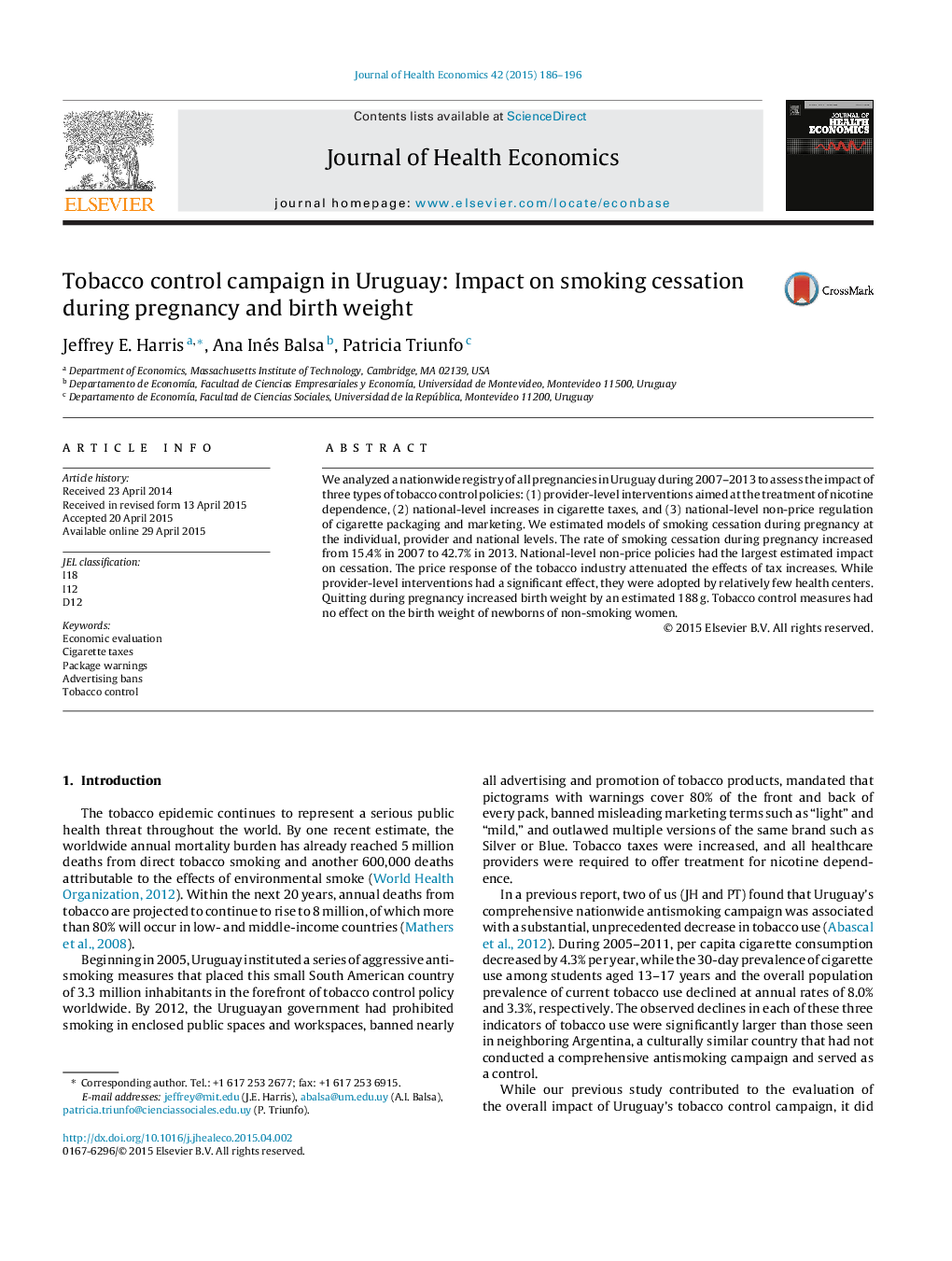| Article ID | Journal | Published Year | Pages | File Type |
|---|---|---|---|---|
| 961809 | Journal of Health Economics | 2015 | 11 Pages |
Abstract
We analyzed a nationwide registry of all pregnancies in Uruguay during 2007-2013 to assess the impact of three types of tobacco control policies: (1) provider-level interventions aimed at the treatment of nicotine dependence, (2) national-level increases in cigarette taxes, and (3) national-level non-price regulation of cigarette packaging and marketing. We estimated models of smoking cessation during pregnancy at the individual, provider and national levels. The rate of smoking cessation during pregnancy increased from 15.4% in 2007 to 42.7% in 2013. National-level non-price policies had the largest estimated impact on cessation. The price response of the tobacco industry attenuated the effects of tax increases. While provider-level interventions had a significant effect, they were adopted by relatively few health centers. Quitting during pregnancy increased birth weight by an estimated 188Â g. Tobacco control measures had no effect on the birth weight of newborns of non-smoking women.
Related Topics
Health Sciences
Medicine and Dentistry
Public Health and Health Policy
Authors
Jeffrey E. Harris, Ana Inés Balsa, Patricia Triunfo,
